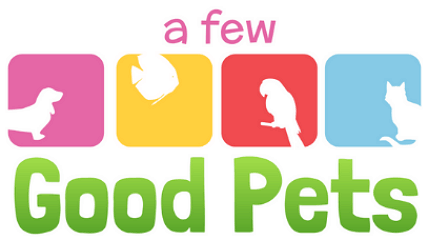American guinea pigs are perhaps the most popular pet guinea pig breed. Besides being popular, they are one of the oldest. And of course, they are super cute and cuddly.
Beyond being charming and fluffy, the American guinea pig breed is colorful. In fact, the American Rabbit Breeders Association (ARBA) recognizes over 20 possible colors. From beige to agouti, tortoiseshell, cream, Dutch, and Himalayan, there are so many American guinea pig colors out in the world.
If you’ve ever wondered what some American guinea pig colors look like, you are in luck. Below, we describe various American guinea pig colors. Read on and satisfy your curiosity.
Table of Contents
Agouti

Agouti American Guinea Pigs come with multicolored ticked coats. You could also say they have salt and pepper fur. In other words, the base of their hair has a color that differs from the color at the tip.
The salt and pepper pattern in agouti American guinea pigs covers all body areas except the stomach and eye region. In other words, the fur covering the stomach and eyes of agouti American guinea pigs has a single color.
Agouti American guinea pigs are available in various colors, including the following:
- Chocolate Agouti – chocolate base and red tip
- Lemon Agouti – black base and buff tip
- Cream Agouti – chocolate base and buff tip
- Golden Agouti – Black base and red tip
- Silver Agouti – Black base and silver tip
- Cinnamon Agouti – Chocolate base and silver tip
Besides the usual agouti, there is a solid agouti pattern. Solid agouti American guinea pigs have the ticked coloration all over. However, they are hard to come by.
Brindle
Brindle American guinea pigs have equally mixed bands of red and black fur. They are like tortoiseshell, but their colors are not in square patches.
The red and black bands of Brindle American guinea pigs should be as intermixed as possible for show purposes.
But then, it is not out of place for the guinea pigs to have areas of predominant black or red fur.
Dalmatian
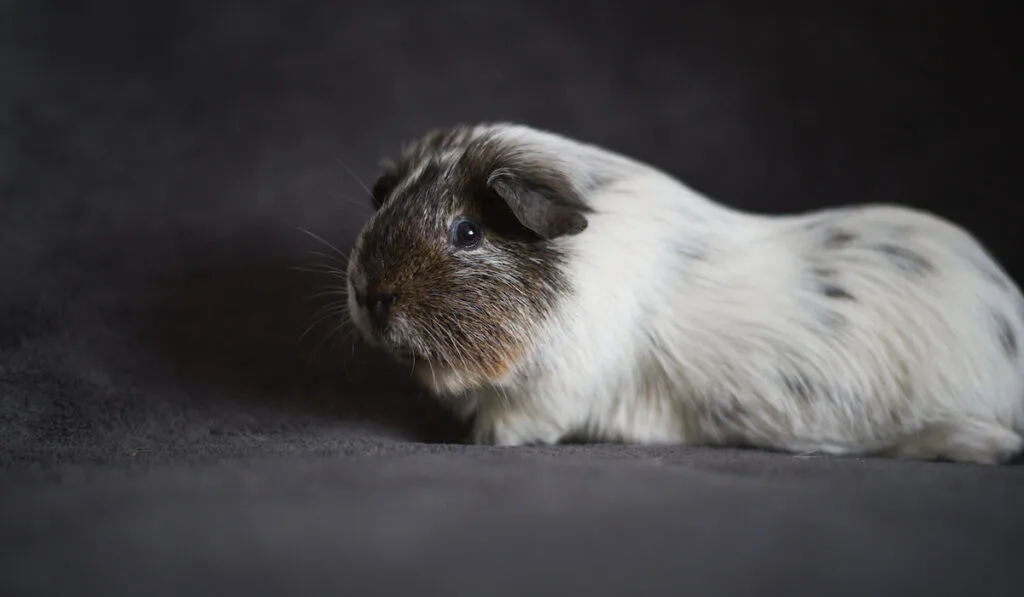
The coats of dalmatian American guinea pigs are like those of dalmatian dogs. They generally have white coats with black spots. However, most of their head is black, except the mid-face.
Never try to breed 2 dalmatian American guinea pigs together. If you do, the offspring may suffer genetic defects, which can cause malformations. If you want to breed dalmatian American guinea pigs, pair a dalmatian with a non-dalmatian.
This way, none of the offspring will get two dalmatian genes, and the defects will be absent.
Dutch
Dutch American guinea pigs have white fur around their mid-body and forelimbs. They also have a white mid-face shaped like a triangle and tapered towards the forehead. Then the other parts of the body have patches of colors like red, brown, and black.
Roan
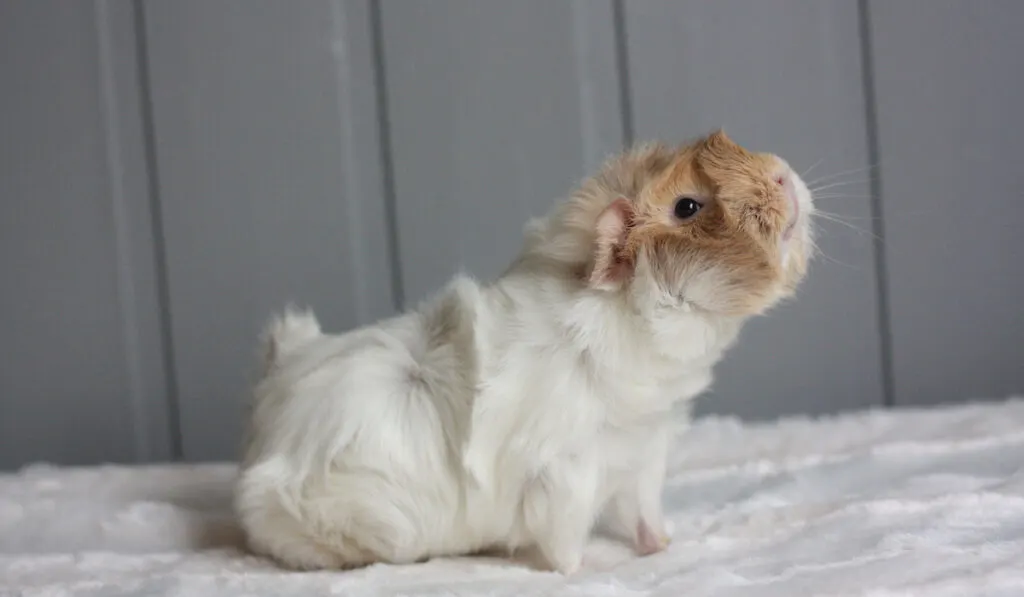
Roan American guinea pigs have two colors in their coat. But unlike the other bi-colored coats, they do not have color patches or spots. Instead, the fur colors of roan American guinea pigs blend into each other to create a speckled pattern.
Roan American guinea pigs typically come with light-colored fur and darker fur, and the lighter one is usually white. Also, their coats may be short-haired, long-haired, or wiry.
As with dalmatian-coated guinea pigs, avoid breeding two roans or you will end up with deformed pups. Also, avoid pairing a dalmatian with a roan, or the results may be similar.
Rather than pairing roan American guinea pigs, pair a roan with a non-roan.
Self
Self American guinea pigs have just one fur color throughout their coats. They are pretty easy to come by and are available in up to 12 colors. You can have them in colors like beige, black, red, cream, chocolate, and lilac.
In fact, depending on the color of their fur, some of their eyes may not be the usual guinea pig eyes.
Beige
Beige American guinea pigs have coats colored like light khaki pants, and their eyes are pink.
Black
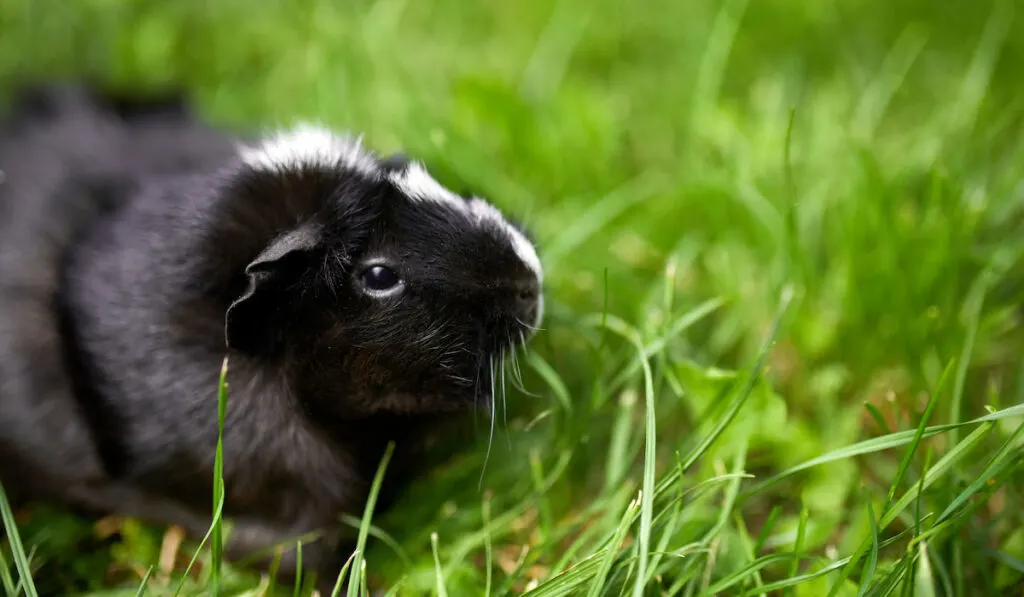
Of course, the self-black is the darkest coloration in American guinea pigs. It is pretty similar to the chocolate coloration, but the chocolate has a brown hue.
Besides the regular black, some self-black American guinea pigs may have a blue hint. When they do, people call them blue-black or blue.
Self-black American guinea pigs have black eyes.
Cream
The cream coloration is similar to beige but a few tones lighter.
Chocolate
Self-chocolate American guinea pigs are about as dark as the black ones. However, they have a brown tinge to them.
Self-chocolate American guinea pigs come with black eyes.
Himalayan
Himalayan American guinea pigs are like albinos. Their coats are primarily white, and their eyes are red. But unlike albino guinea pigs, Himalayan American guinea pigs may have small patches of contrasting fur around their ears, feet, and nose.
The contrasting fur may be brown or black, and it may not be prominent in the early days of the guinea pig. But after some months, it should be easy to see.
Lilac
It may be hard to notice self-lilac coloration in guinea pigs at first. On inspecting the coat from afar, it may look greyish. But when you get closer, you should see the purplish or violet streaks.
Like beige American guinea pigs, lilac guinea pigs have pink eyes.
Red
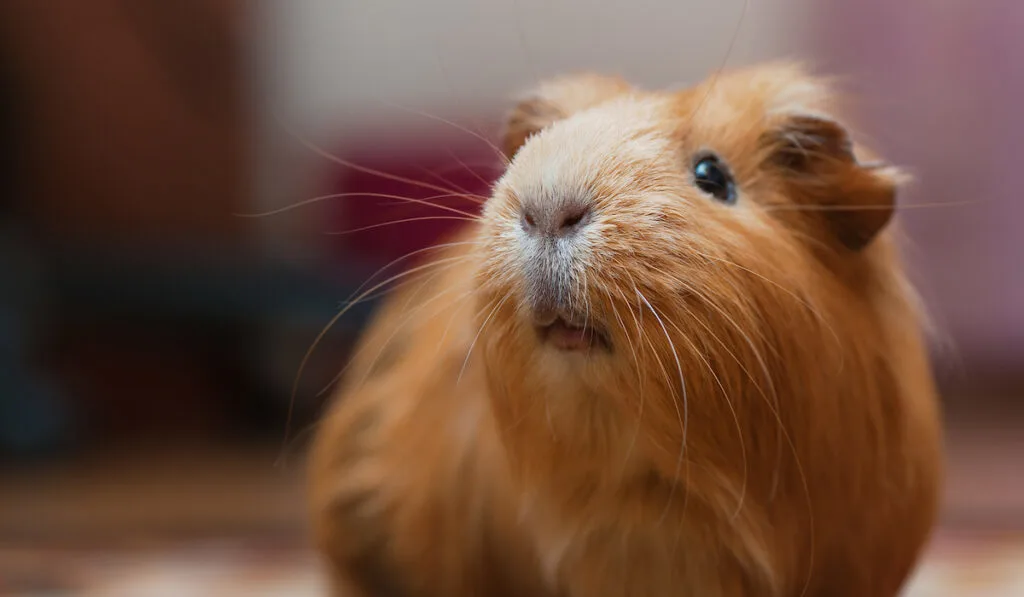
Self-red American guinea pigs have a brownish-red coat. The hue is pretty close to the liver color seen on bloodhounds and is darker than the gold color of gold guinea pigs.
Self-red American guinea pigs have black eyes.
Tan
Tan American guinea pigs have one dominant color patterned with tan markings. The tan markings appear on the belly and around the eyes and muzzle. But apart from these spots, tiny tan patches may be present around the ears. These little patches are called pea spots.
The dominant color in tan American guinea pigs can be black, chocolate, blue, beige, or lilac. While the tan coloration is red.
Tortoiseshell
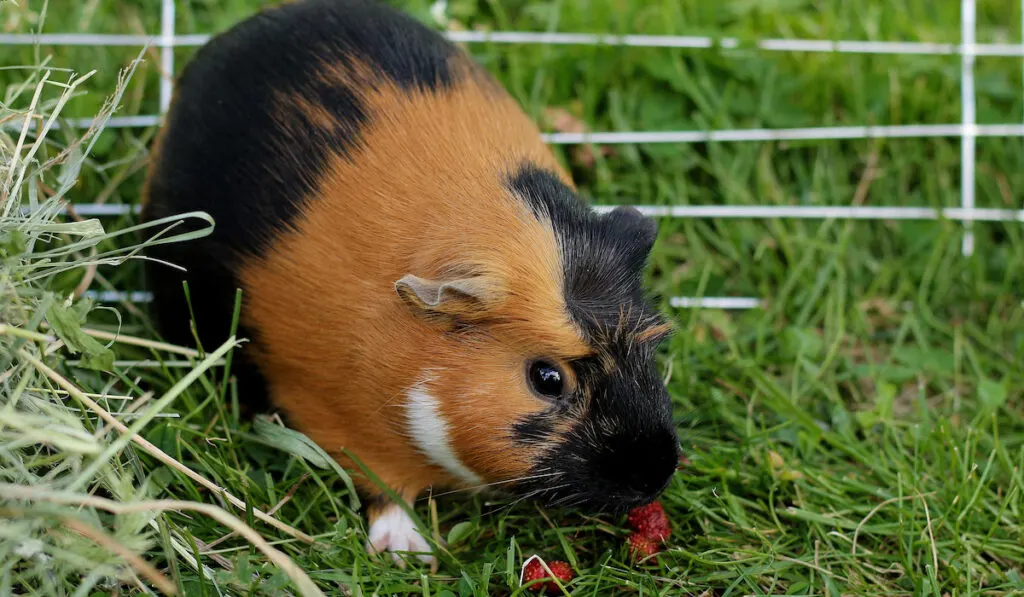
Tortoiseshell American guinea pigs have black and red fur in their coat. Both colorations form well-defined block/rectangular patterns, similar to a tortoiseshell.
Tortoiseshell and White
Tortoiseshell and white coloration is similar to the tortoiseshell coloration because they both have well-defined patterns. However, the tortoiseshell coloration has two colors. Contrarily, the tortoiseshell and white has three colors: red, black, and white.
In guinea pigs shows, judges prefer neatly defined colors. But beyond that, the colors should have a square shape and be about the same size.
